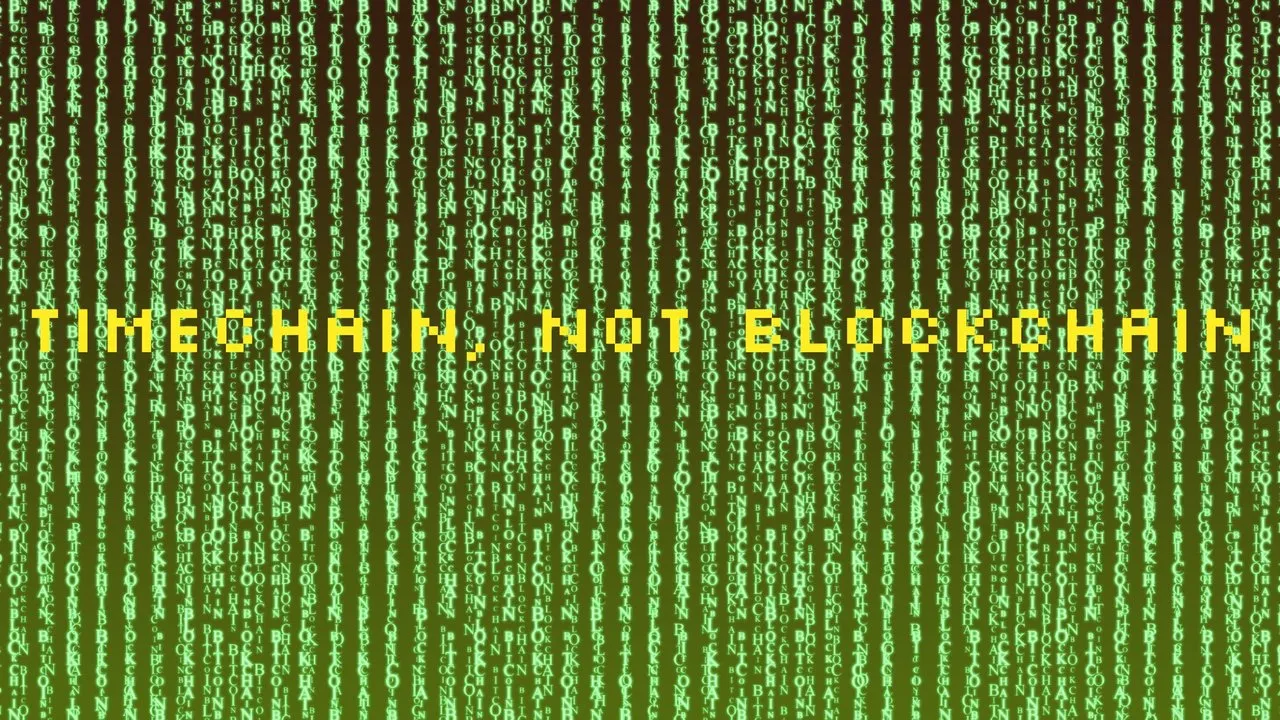
In the year 2019, the term blockchain is so ubiquitous that the Oxford dictionary has felt compelled to include its definition, and text processors no longer highlight it as a typo. However, as presented in the 2008 pre-release source code of Bitcoin (which circulated on the cypherpunk mailing list), the first name of blockchain was actually "timechain".
Prominent Canadian bitcoiner Francis Pouliot has recently highlighted a series of lesser-known facts in a Twitter thread, and it's strange to see how little the general public knows about the early phases of Bitcoin. For mostly ideological reasons, there is a crowd of people who choose to believe that Satoshi's cryptocurrency was a quickly-coded project which arrived as a response to the 2008 financial crisis.
While it might be true that the release could have been rushed to synchronize with the "Chancellor on the brink of second bailout for banks" headline, these bits of information reveal a thorough review process that usually isn't allowed to obstruct the way of a romanticized story.
https://twitter.com/francispouliot_/status/1106028853032611843
- francispouliot_
The idea of the blockchain being called a timechain back in late 2008 is a clear reminder that Satoshi wasn't exactly certain about his decisions, the technology was still in its infancy, and there really isn't something prophetic about the work of the mysterious cypherpunk (or group of cypherpunks). It's innovative, but it arrived at this stage and to the conclusions of the whitepaper through constant trial and error that we seldom talk about.
Furthermore, the Bitcoin terminologies in this pre-release source code reveal another peculiarity: the BTC unit was referred to as "coin", while the satoshis were called "cents". In the age where Lightning allows users to send amounts smaller than one Satoshi (the hundred millionth part of a bitcoin), this comes as an interesting historic fact which reveals the original intentions of the creator.
Features included in the original Bitcoin design that have been removed
Timechains and cents aside, there is more information to be discovered in this early prototype of Bitcoin. For instance, a section described in the source code as "// Add atoms to user reviews for coins created" indicates that some kind of rating system was intended to be included. According to cryptographer and early Bitcoin developer Mike Hearn, Satoshi wanted to add an "integrated P2P eBay-style market" which establishes a reputation system that's based on the amount of individual mining performed. Interestingly, this addition was completely dropped and never mentioned again – yet another proof that the creator was undecided and willing to experiment.
https://twitter.com/francispouliot_/status/1106043767864377344
- francispouliot_
This also reminds us that the anonymous creator of the protocol didn't predict mining pools and considered Bitcoin as something to which everyone should participate via mining with their own computers. Also, the inclusion of "atoms" is something that we will probably never understand – and not even the prolific cryptographer and developer Peter Todd was able to make sense out of it.
This "timechain" version of Bitcoin also includes a different hash for the genesis block, which indicates that more experimentation has been done in the field prior to the acclaimed public release.
0x000006b15d1327d67e971d1de9116bd60a3a01556c91b6ebaa416ebc0cfaa646 (the experimental hash of the first pre-release Bitcoin block) looks like a peculiarity to those accustomed with 000000000019d6689c085ae165831e934ff763ae46a2a6c172b3f1b60a8ce26f (the hash of the Genesis Block).
While this information has been available to the public since at least December 23th 2013, there just wasn't much media coverage about it. A simple search engine inquiry which uses the terms "timechain bitcoin" will only display a few results and highlight to a different project that seems to have appropriated the name.
The fascinating part is that the data has been publicly available for more than five years, yet the comments of BitcoinTalk users Cryddit, Peter Todd, deepceleron, and Mike Hearn are still obscure. Therefore, it's a pleasure and a privilege to shine a light on these little-known facts.
Riccardo "Fluffy Pony" Spagni has presented more details about the code that Satoshi removed from Bitcoin, with a focus on the unfinished distributed marketplace for which the rating system was required.
https://twitter.com/fluffypony/status/1106212531662712832
- fluffypony
Timechain is bad news for fake Satoshis and impersonators
Since his public emergence in the space, nChain scientist Craig S. Wright has constantly pretended to be Satoshis Nakamoto, or at least the head of the team which developed Bitcoin. His narrative has constantly shifted from a laid-back approach of wishing to stay away from public scrutiny (as expressed in the revealing BBC interview) to an aggressive campaign to appropriate the Bitcoin brand for his altcoin.
Recently, Mr. Wright has begun to write blog posts which feature compelling stories from 2009 and 2010, when he supposedly released Bitcoin to the public and saw the early developments surrounding it. However, none of the essential details presented in the previous section of the article are highlighted in the narrative pieces which more or less purposely stay away from technical discussions.
The stories of Craig S. Wright are emotional, relate to personal events, but don't make use of the technical jargon that Satoshi Nakamoto has introduced to the world. By looking up "Craig S. Wright timechain" on Google, only one journalistic piece on the Wired website presents details about the original name of the blockchain, when the Australian scientist is quoted. Other than that, there are only a few forum discussions to which Mr. Wright didn't participate.
This only goes to show the history isn't quite on the side of Craig S. Wright, and the narrative he presents as a justification for bearing "Satoshi's Vision" is both fictional and incomplete. And if you're ever in doubt about Mr. Wright's true colors, just take a look at this 2015 panel discussion where he debates Nick Szabo (a worthier candidate for the Satoshi title) and Trace Mayer: the self-proclaimed inventor of Bitcoin shies away from backing up the statements that he now iterates every waking hour, and even makes questionable statements about the protocol being Turing complete.
Timechain, not blockchain?
The missing or modified elements from Bitcoin are also bad news for purists who read the whitepaper as gospel that should not be questioned. In this regard, these early struggles of Satoshi prove to us that intentions and main ideas are much more important than a solution that can be dated back to December 2008. While Satoshi was still around, he allowed early adopters like Hal Finney to make improvements to the open-sourced protocol and effectively turn Bitcoin into the project we have today.
In terms of the law, there are two ways of interpreting texts: by taking into account the literal context of the law, or by considering its spirit (intentions). When it comes to Bitcoin and Satoshi, it's healthier to assess that the protocol should serve fundamental functions to preserve core ideas, rather than change according to the expectations of speculative investors or destructive actors.
There will always be purists to point out to the division between their interpretation and the status-quo, and this can lead to philosophic and religious discussions about what Bitcoin should be. Nevertheless, it's healthier to regard Bitcoin as a modern language: it takes elements and word roots from thousands of years of developments, but it evolves through time thanks to the various waves of adopters who enrich the jargon.
Ultimately, as long as we have a truly decentralized protocol which ensures the easy participation of anyone to the block validation and discovery process, has ties to the known Genesis block and allows Satoshi to return any time to reclaim his coins, it's still Bitcoin. Also, Craig S. Wright is not Satoshi.
Later edit: Thanks to a contribution by Riccardo "Fluffy Pony" Spagni, more details about the distributed marketplace embedded in the original Bitcoin client. All the code that Satoshi removed in later versions can be found in this GitHub repository.
Read more:
At 10 years old, Bitcoin is a wunderkind who's fighting for our freedom
On reducing the Bitcoin block size to 300kb
Satoshi Nakamoto's profile updated in 2018
Originally posted on Crypto Insider : https://cryptoinsider.com/timechain-satoshis-original-vision-blockchain-bitcoin/
